As it gained seagoing experience, the US Navy’s dreadnoughts began to diverge from their British sisters. The Americans believed that long-range battle would be prevalent in future wars, and thus had begun with the New York class to fit the ships with the necessary fire control gear. However, it was not until the 1912 battleship design that the change took full effect.
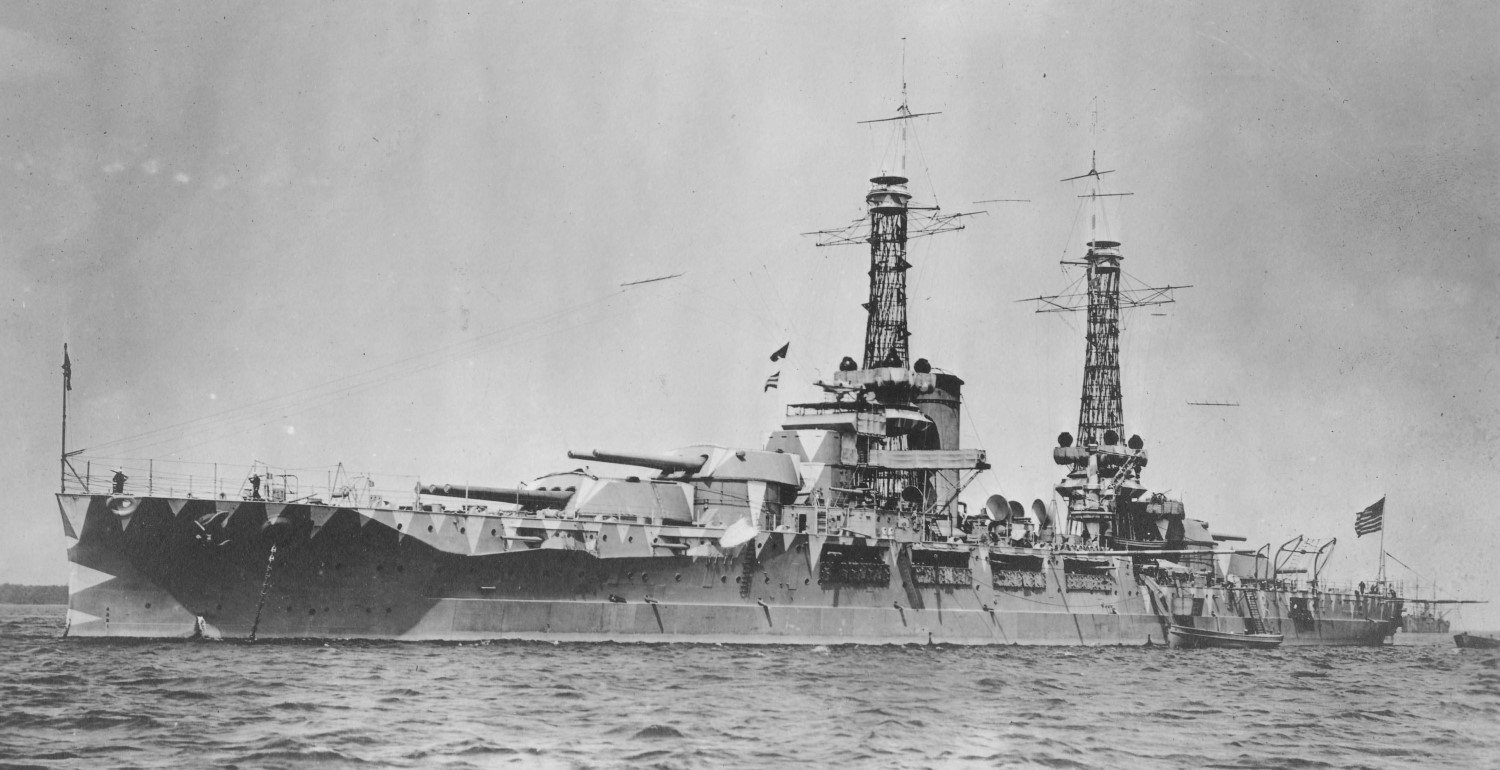
Nevada, the first of the Standards
The USN concluded that at long ranges, the use of AP shells would dominate, as there was no way to control where on a ship hits would be made, and HE shells would be useless against belt and deck armor. As a result, it wasn’t worth armoring against anything but AP shells, which required thick armor. Light armor would be a waste of weight and merely serve to burst the AP shells.1 This scheme became known as all-or-nothing protection, and within a decade, the lessons of Jutland had resulted in its wide adoption by other nations.
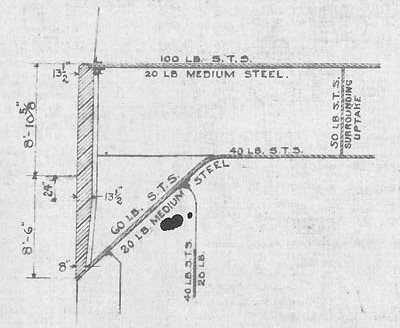
Armor cross-section of Nevada
As implemented, it was in fact rather simple. The belt was 13.5″ thick over most of its height of 17′ 4 5/8″, tapering down to 8″ below the waterline. Sitting on top of it was a 3″ armored deck, significantly heavier and higher in the ship than on previous American battleships. A deck below the main armor, there was a 1″ splinter deck, intended to catch any fragments that might be driven through the main armored deck. At the edges, the splinter deck sloped to meet the bottom of the belt, with the slopes being 2″ thick. This was an unprecedented level of protection against plunging fire, as well as a belt competitive with any other battleship of the time.
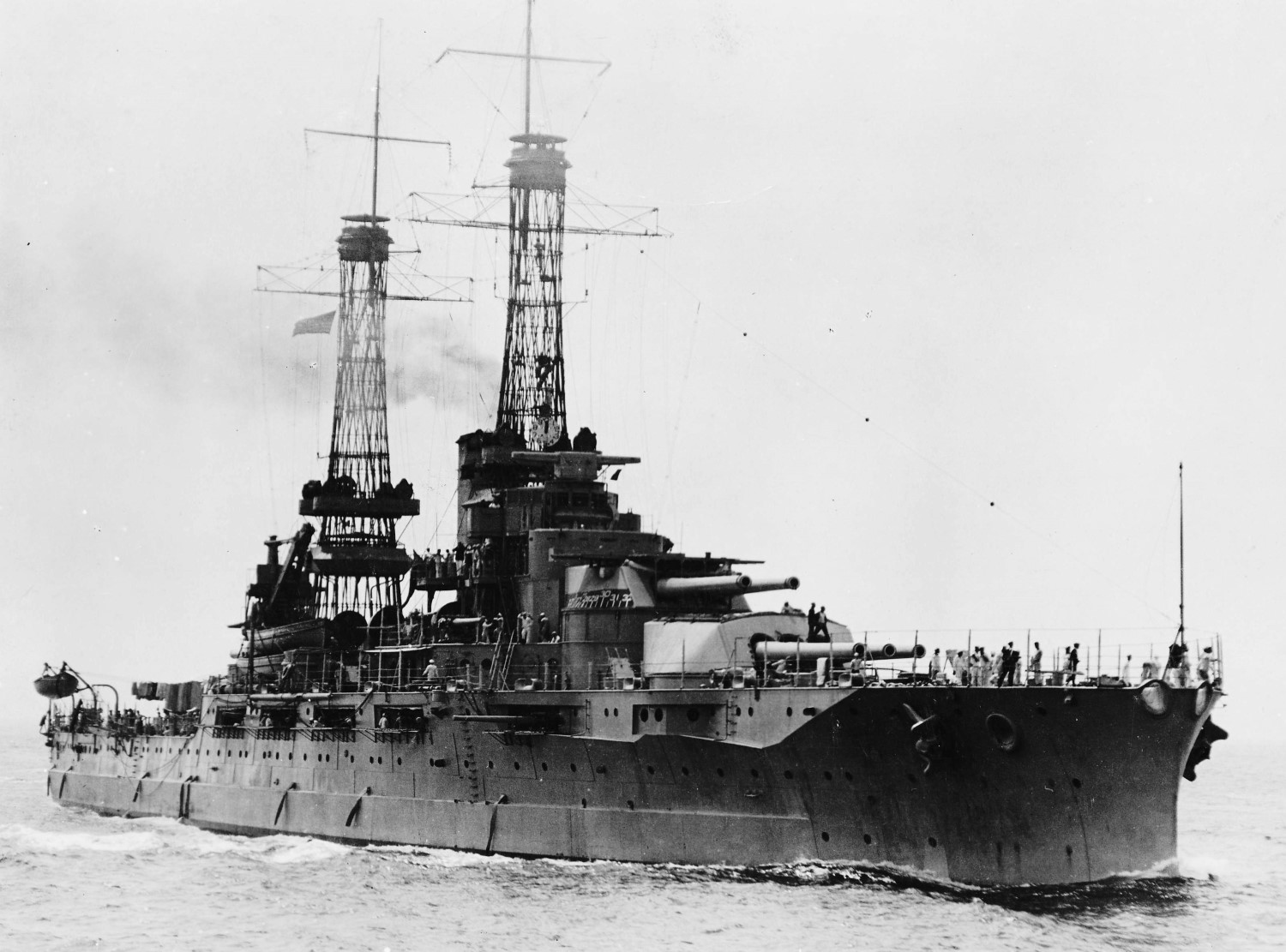
Oklahoma, sister to Nevada
Of course, protection of this quality was heavy, so the designers had to find ways to economize on length. The initial plans saw Turret 4 of the New York class removed, and the other four turrets converted to triples.2 This would have seen Turret 3 remaining amidships, a configuration reminiscent of HMS Lion. However, reports soon came in of the failure of the magazine refrigeration system in the Delaware class, which resulted in poor shooting by Turret 3. The increased stiffness given by the raised armored deck allowed the turrets to be concentrated at the ends, solving the problem while keeping length down. Later, to hold the size of the ship down, Turrets 2 and 3 were changed to twins, matching the 10-gun broadside of the New York class.

Section of Nevada, including armor thicknesses
Length was reduced further by the adoption of oil fuel. Oil has considerably more energy per unit mass than coal, and is much easier to handle, allowing the engineering spaces to shrink considerably. Secondary benefit also came from the reduction in engineering personnel, as oil didn’t have to be shoveled into the boilers.
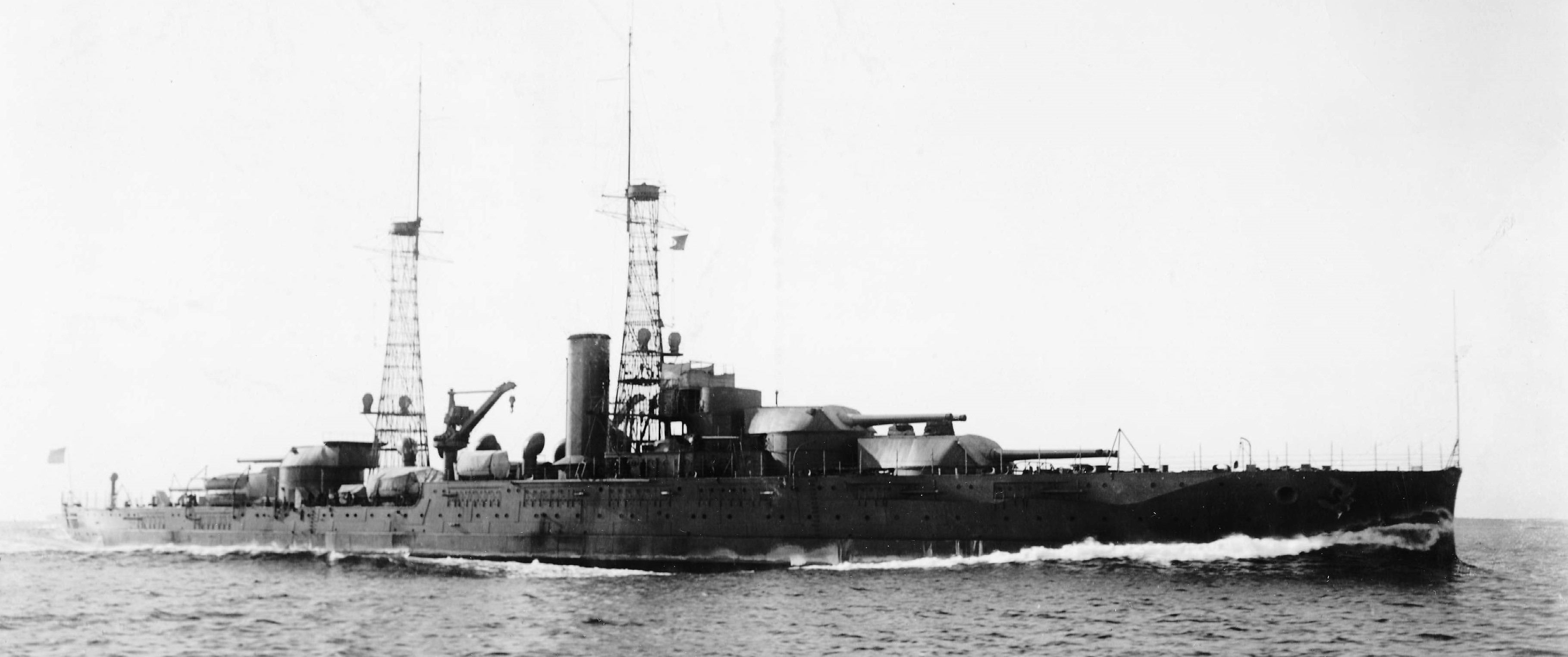
Oklahoma on trials
The combination of the all-or-nothing armor scheme, the triple turret, and oil fuel was probably the single greatest change in battleship design since Dreadnought. The resulting Nevada class was not entirely without flaws, but their armament of 10 14″ guns, two torpedo tubes, and 21 5″ secondary guns made them formidable ships. The biggest weakness was the engines of the second unit of the class, Oklahoma. The US, concerned with endurance in fighting Pacific campaigns, but attracted by the greater reliability and power of turbines, chose to split the propulsion systems of the two ships, giving Nevada turbines and Oklahoma reciprocating engines. By the late 30s, Oklahoma’s engines were getting increasingly old and difficult to use, and she was seen as by far the least useful of the Standards before her loss at Pearl Harbor.
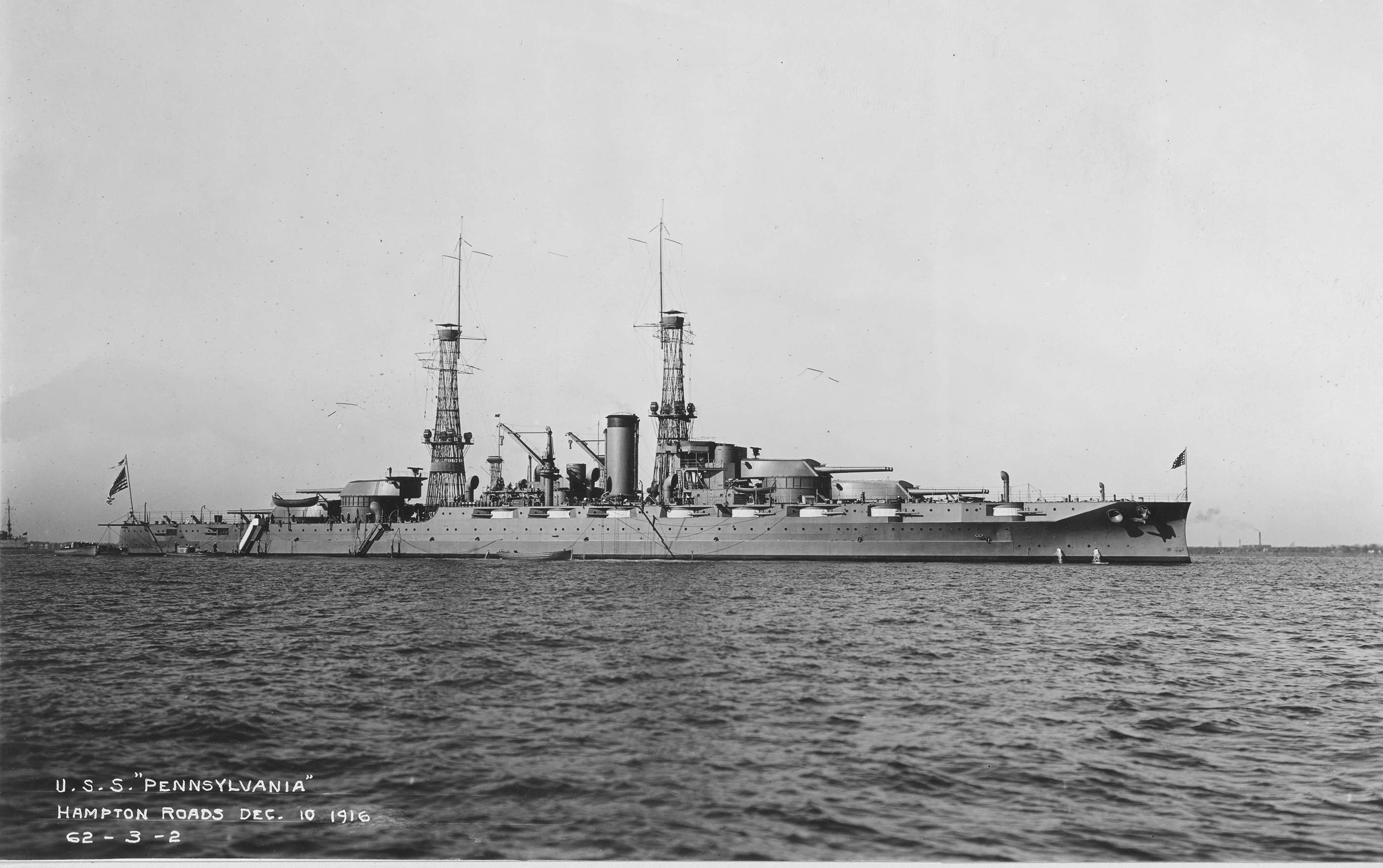
Pennsylvania
The Nevadas set the pattern for the next four classes of American dreadnought, together known as the Standard Type. This is often seen as a triumph of planning and foresight, the USN simply knowing that they had a great design on their hands which only needed minor improvements. As is often the case, this is a dramatic oversimplification of the situation.
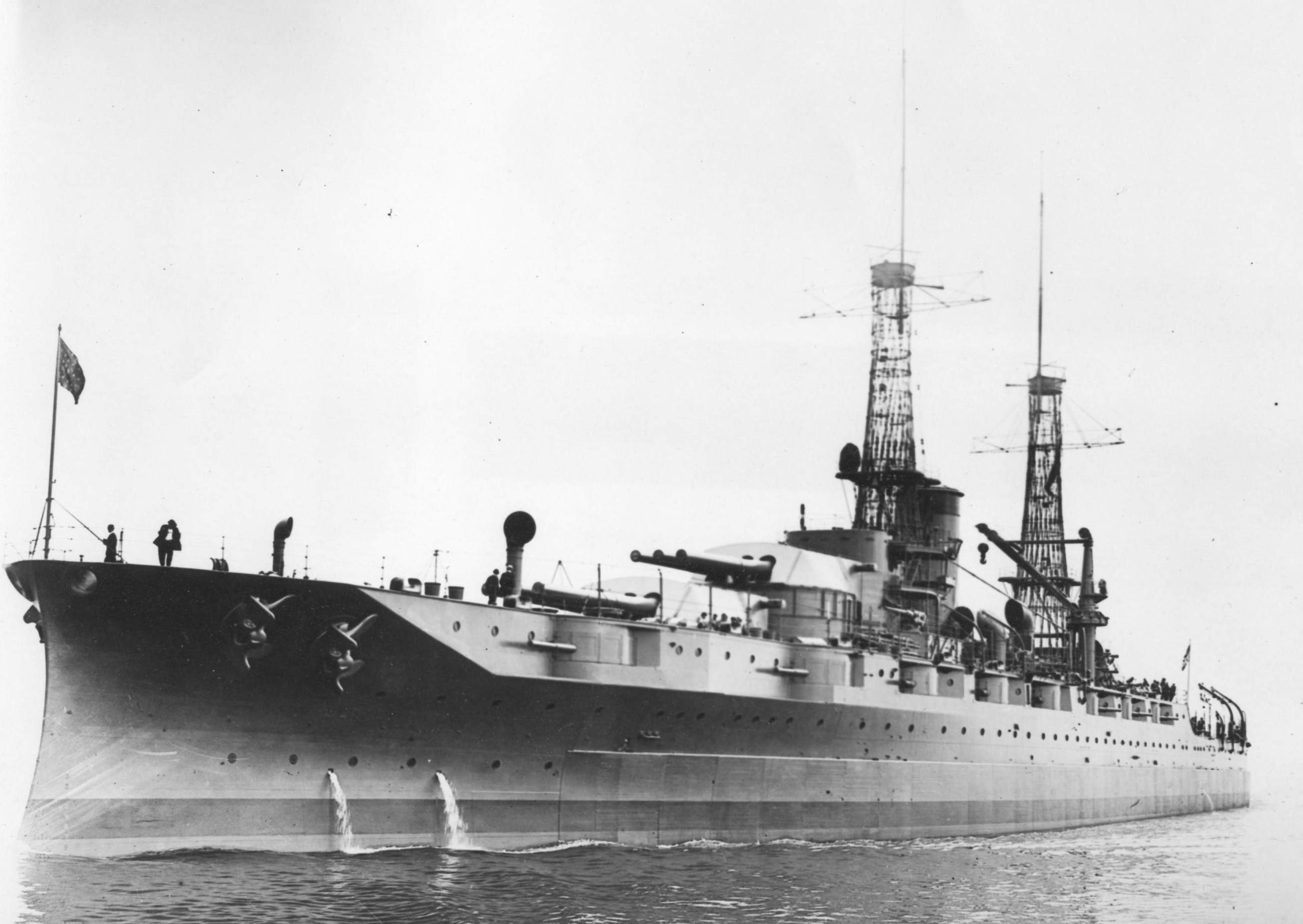
Arizona of the Pennsylvania class
The next class, the Pennsylvanias, were a fairly straightforward upgrade of the Nevadas, the main changes being the replacement of the twin 14″ turrets with triples, and the final abandonment of the reciprocating engine.3 This drove up size about 15%, which irritated Congress, which had seen ship size grow 50% from the Delawares in the past five years. They refused to authorize more than one ship in FY13, followed by a second unit of the class the next year.4
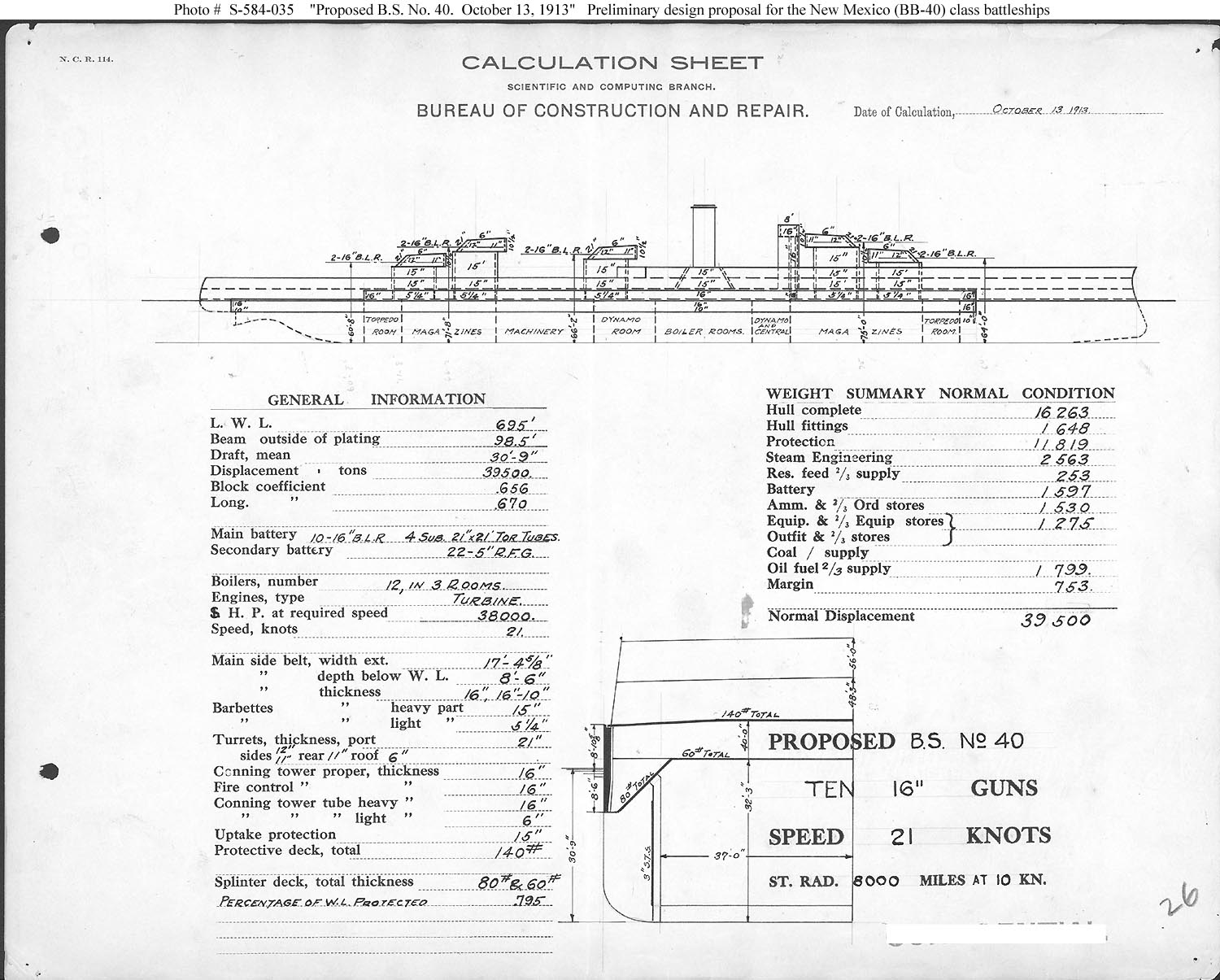
Spring Style5 for largest FY15 battleship proposal
While this was going on, the Bureau of Ordnance was working on a 16″ gun, which threatened to make the ships armed with and armored against 14″ guns obsolete, much as the 14″ gun had done to the 12″ ships. A design that embraced this change was prepared for FY15, with a 16″ belt, a 3.5″ deck, 10 16″ guns, 6″ secondary batteries and the first anti-aircraft guns on a US battleship design. The total cost was 8,000 tons more than Pennsylvania, twice the jump from Nevada to that ship. However, the navy sensed that this was too much to ask and that it was too soon to introduce the 16″ gun, and prepared a ship with the improved armor and secondary batteries, but only 4 14″ triple turrets.6
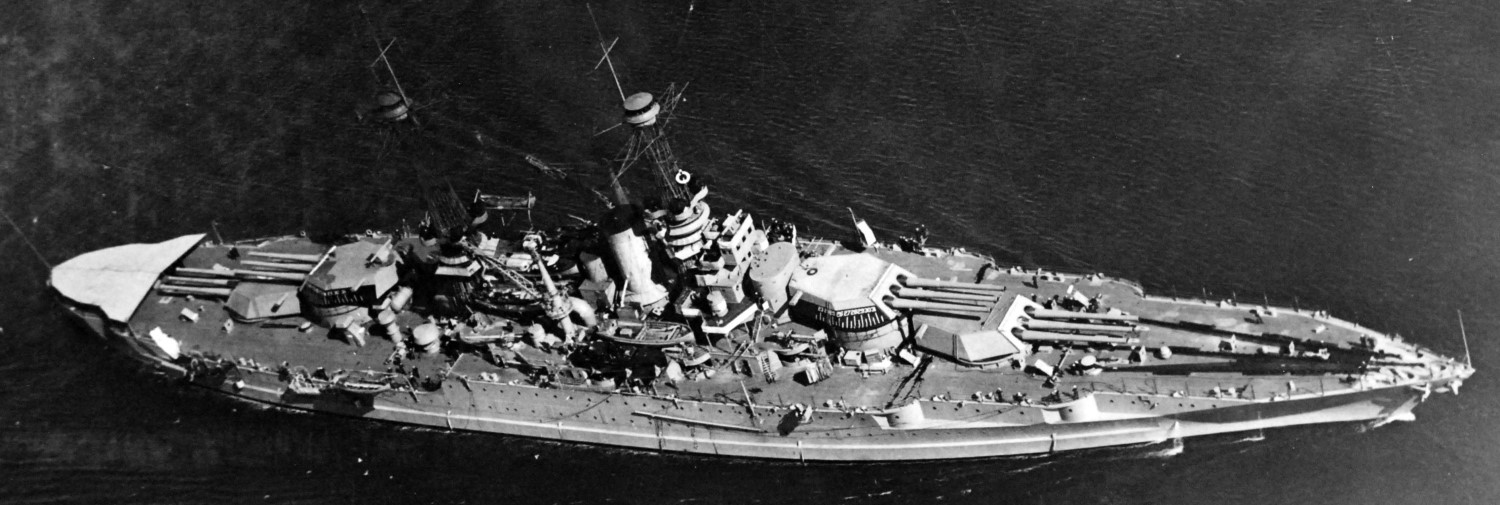
New Mexico after WWI
Even this increase was too much for the Secretary of the Navy, Josephus Daniels. He rejected the design, and instead mandated that a version of the Pennsylvania class be submitted to Congress as Battleship 1915. The one major improvement he agreed to was the use of separate slides for the guns, although the navy designers managed to squeeze out more. A clipper bow was fitted to reduce wetness, and many of the secondary guns were placed in the superstructure instead of in the wet casemates that had been common on previous American battleships. The 14″/45 guns used on the previous two classes were replaced with 14″/50s, and the deck was thickened from 3″ to 3.5″. Two pre-dreadnoughts were sold to Greece to allow a third unit of the resulting New Mexico class to be purchased in 1915. The name ship of the class also served as the prototype of another major innovation, turboelectric propulsion. This allowed the turbine speeds to be decoupled from the propeller speed, giving greater endurance. The system was also cheaper, lighter, and more robust, and it was incorporated into later US battleships.
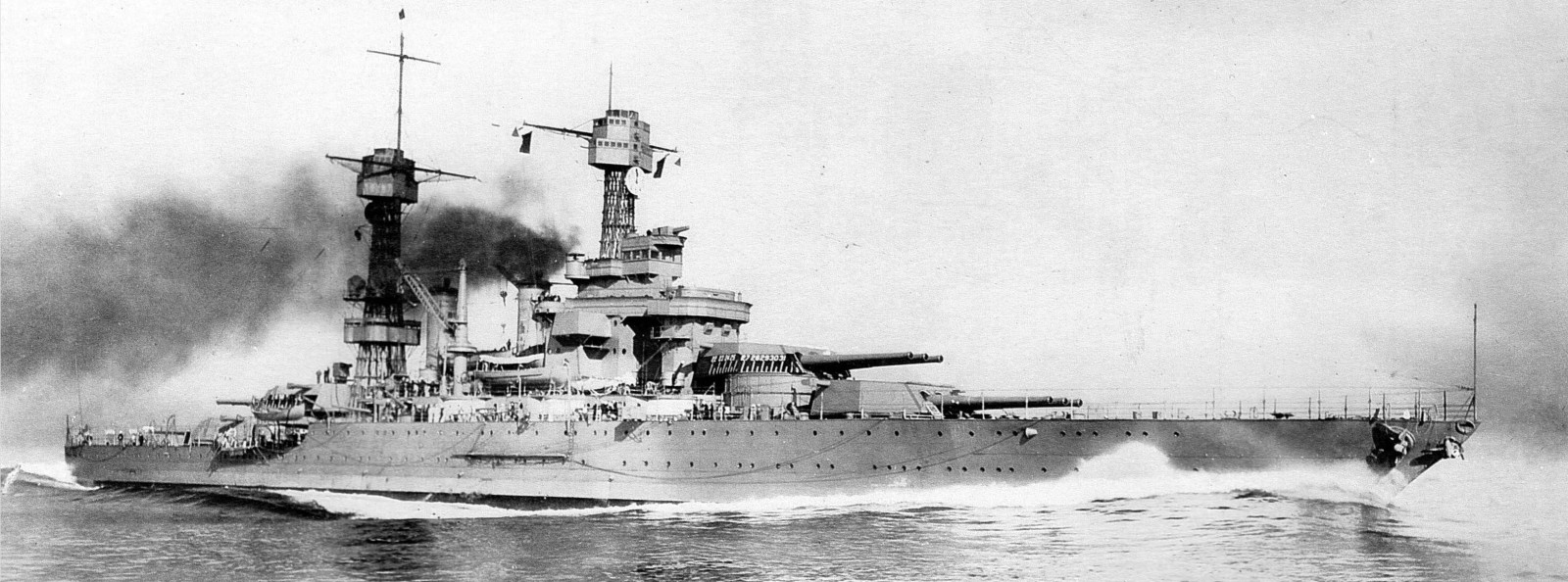
California, sister to Tennessee. Note the lack of casemates.
For the 1916 ship, the General Board sent Secretary Daniels the characteristics it had submitted the previous year,7 and again Daniels instructed that an improved version of the previous year’s ship be sent to Congress instead. The Tennessee class was designed around turboelectric drive from the start. This allowed a massive improvement in resistance to underwater damage. The new propulsion system was more compact, giving space for a new and very effective Torpedo Defense System, and allowed much greater subdivision of the machinery spaces in case the TDS was breached.8 The turret elevation was also increased from 15° to 30°, increasing range, and various detail improvements were made.
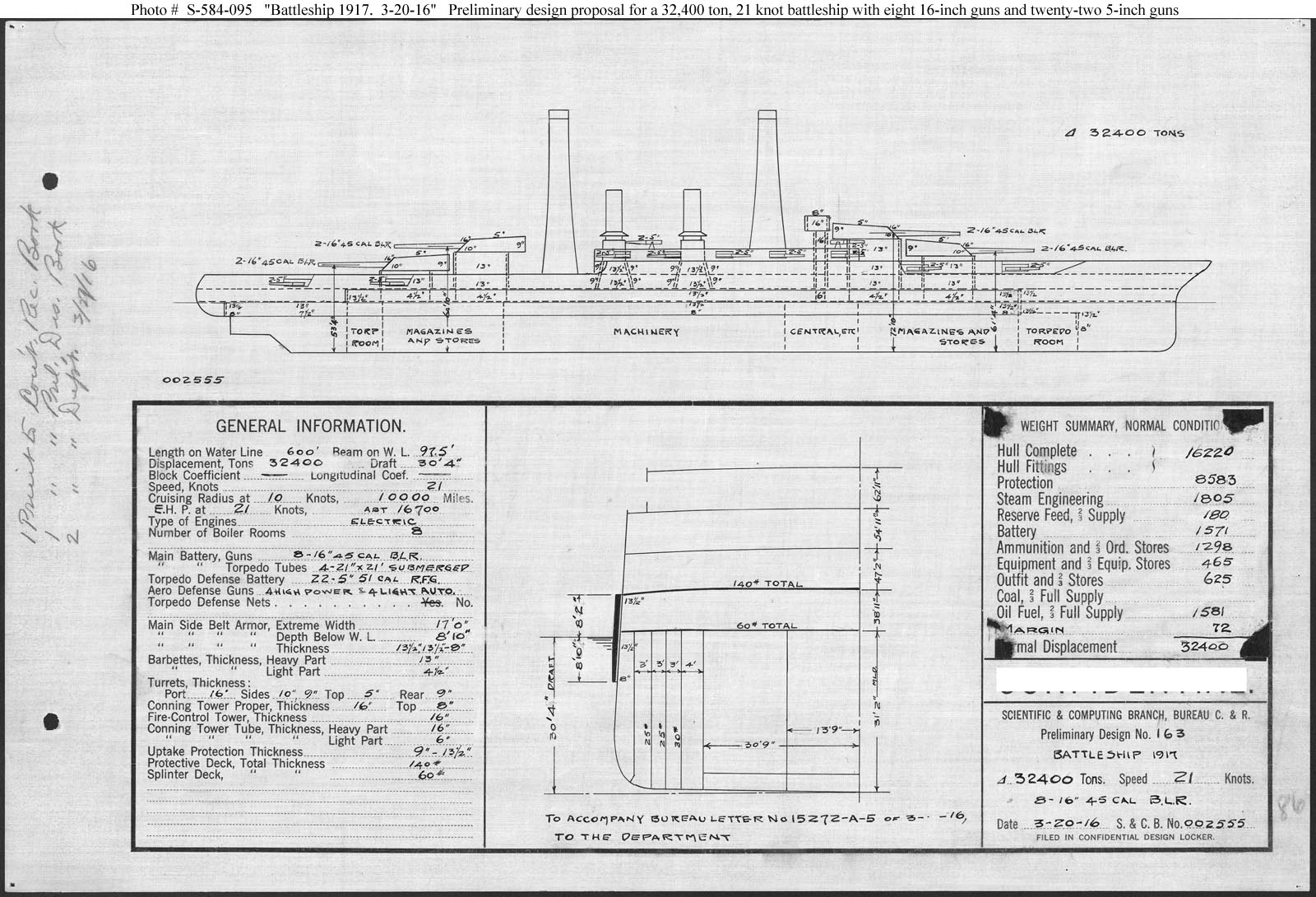
Design drawing for the Colorado class
The FY1917 construction plan saw the same drama of the previous two years play itself out again. The 16″ gun was now ready, and battles in the North Sea had revealed that combat would take place at a longer range than previously anticipated. As a result, the Board sent in a proposal for a ship of the same size as the last two proposals, but with 10 16″ guns and a thinner belt. Daniels again refused to sanction a bigger ship, and demanded a repeat of the Tennessee, except for giving the General Board the option of triple 14″ or twin 16″ armament. They chose the 16″ gun, and four units of the Colorado class were authorized as part of the massive 1916 Naval Act, although one, Washington, was cancelled under the Washington Naval Treaty and later used for armament testing.
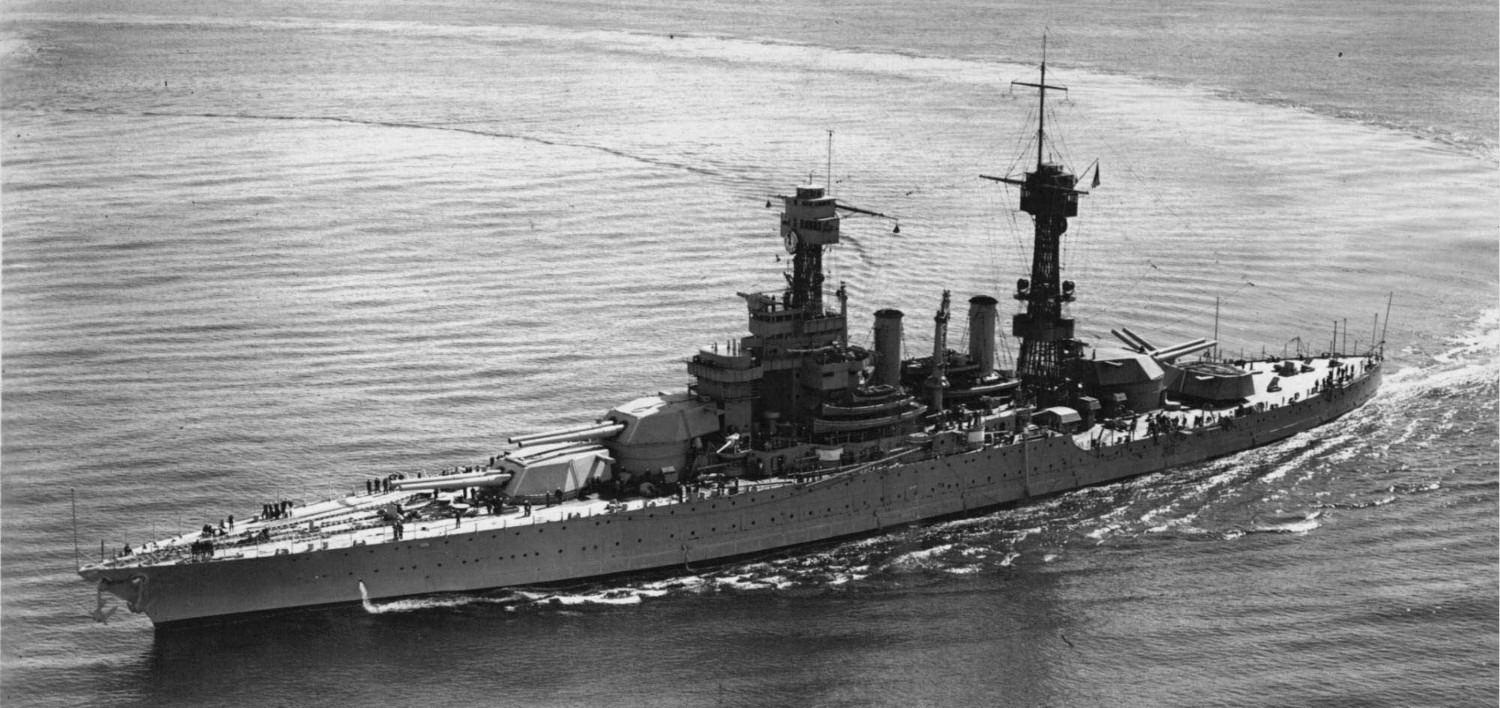
Colorado in 1924
The story of the Standard Type came to an end with the Colorados. While the Standards had been the result of political pressure to hold down ship sizes, and not careful planning as is commonly assumed, the ships made up the backbone of the American battlefleet during the interwar era. The ships sunk at Pearl Harbor were Standards, and most of them were salvaged and went on to have illustrious careers in World War II. The last salvo ever fired at one battleship from another came from a Standard, USS Mississippi.
These ships were a weird hybrid, designed before WWI, but in many ways more similar to the ships that came from the lessons of that war than they were to their contemporaries. However, they provided the US with a first-rate interwar fleet, as the next class of US battleships would never be built, victims of the axe wielded in Washington. We’ll look at those ships, and the others that died on the table, in later installments.
1 This conclusion was not universally shared. The British and Russians both concluded that heavy HE shells would be a serious threat even at long range, and made extensive use of light armor on their ships. ⇑
2 Much as in the British 15″ gun, the triple turret was not ready until after the contracts for the ship had been signed. Fortunately, the American gamble, much like its British counterpart, paid off. ⇑
3 This isn’t to say there weren’t less conventional suggestions. At one point, it was suggested that the 22 5″ secondary guns be removed and replaced with improved underwater armor because torpedo hits were inevitable. As it was, the torpedo bulkhead was made thicker, but the guns remained. ⇑
4 This is the era when Senator Tillman requested the studies of the famous “Maximum Battleship”. ⇑
5 A sketch design, named after the designs used for fashion. ⇑
6 It should be noted that these turrets were improved ones. The triples on the Nevada and Pennsylvania had only a single slide, forcing all of the guns to elevate together. Later US battleships, and most others worldwide, had individual slides, also avoiding the threat of a single hit jamming the entire turret in elevation. ⇑
7 Turboelectric drive wasn’t added to New Mexico until after the characteristics were submitted for 1916. ⇑
8 Despite the great success of the TE system, there were some issues. Tennessee had a generator failure that required the removal of the machinery for repair ashore, and it was discovered that the hatchways were too small. Access routes had to be cut, leading to criticism of the naval architects. ⇑

Comments
Does anyone know where I could find a depiction of the armor, compartmentalization and underwater protection of the Tennessee (or any later TE BB or BC)? Ideally in sort of this style:
https://www.deviantart.com/lioness-nala/art/North-Carolina-class-BB-protection-Armor-TDS-594967184 https://www.deviantart.com/lioness-nala/art/Fuso-class-BB-protection-46887942 https://www.deviantart.com/lioness-nala/art/Yamato-protection-103924729
I am particularly interested in how the electric propulsion impacts how the shafts and propellers are protected.
Unfortunately, the Standards are in many ways shockingly poorly documented. Your best bet is to look at the collection of ship plans at HNSA (http://www.hnsa.org/resources/manuals-documents/booklets-of-general-plans-online/). They have West Virginia, South Dakota (original), Lexington and Saratoga, all of which had turboelectric plants. That was the source of the cross-section I used in the underwater protection post. Those should have all the details you want, although in a rather different style. Usually, TE meant shorter shafts because the motors themselves were quite compact.
Thank you so much, this is a great resource, and has pretty much exactly what I was looking for.
You’re very welcome. There’s a fair number of really good web resources, and I’ve collected what I can in the Link Index post in the top right.
All of the port holes seem like a structural and flooding risk, or are they actually something else?
I’m pretty sure those are portholes. On the structural end, the skin isn’t load-bearing. These ships were not monocoques. I’m less sure about flooding. I don’t know if they opened, although I do know that ventilation wasn’t great aboard most ships of this era. If they didn’t, you only had to worry about breaking one occasionally. In action, you have much bigger concerns, and these ships had ample capability to make repairs in normal conditions. If they did open, I assume there were rules about which ones could be, and any mistakes would be discovered well before they became life-threatening.
@tuna
Friedman’s Battleship Design and Development 1905-1945 has a center slice for most of the standard type classes, but they’re like this:
http://www.kbismarck.org/photos/vanguardarmor01.jpg
not the top down view you’d really want. but maybe that’s enough for the ones you can’t find more details of online.
@cassander
That’s considerably more detailed than the slices in Battleship Design and Development 1905-1945, which are pretty rudimentary (although still very useful). I think you’re talking about US Battleships: An Illustrated Design History, which has more detail on the Standards, and which was the source for this post.
How well did clipper bows work in practice?
@Bruce
I don’t have much information, but things like that rarely fail.
Edit:
I’ve checked Friedman, and there weren’t many details on the issue. Apparently, the official rationale was actually improved anchor handling, and not wetness.
It’s interesting looking at those “Maximum” battleships - IV-1 and IV-2 look amazingly similar to Yamato. The Maxes had more guns(and I’d wager less deck armour, given the era), but overall tonnage, belt armour, gun calibre, and speed are all within a few percent of the Yamato. Impressive for a design that’s 20 years older.
That’s a very interesting insight. Let’s take a look. Friedman has 5″ for the decks of Tillman 4, while Yamato’s was 8″. It’s also worth pointing out that 25.2 kts is not the same thing at all as 28 kts, and there’s a significiant power delta. The Yamatos were 150,000 SHP, while Tillman 4 was 90,000. Armor-wise, Yamato’s 16″ was inclined, while the Tillman’s was vertical, so in terms of effective thickness, which is a major advantage to the Japanese ship. But yes, American designers were quite good at that point, and I don’t think much of the Japanese.